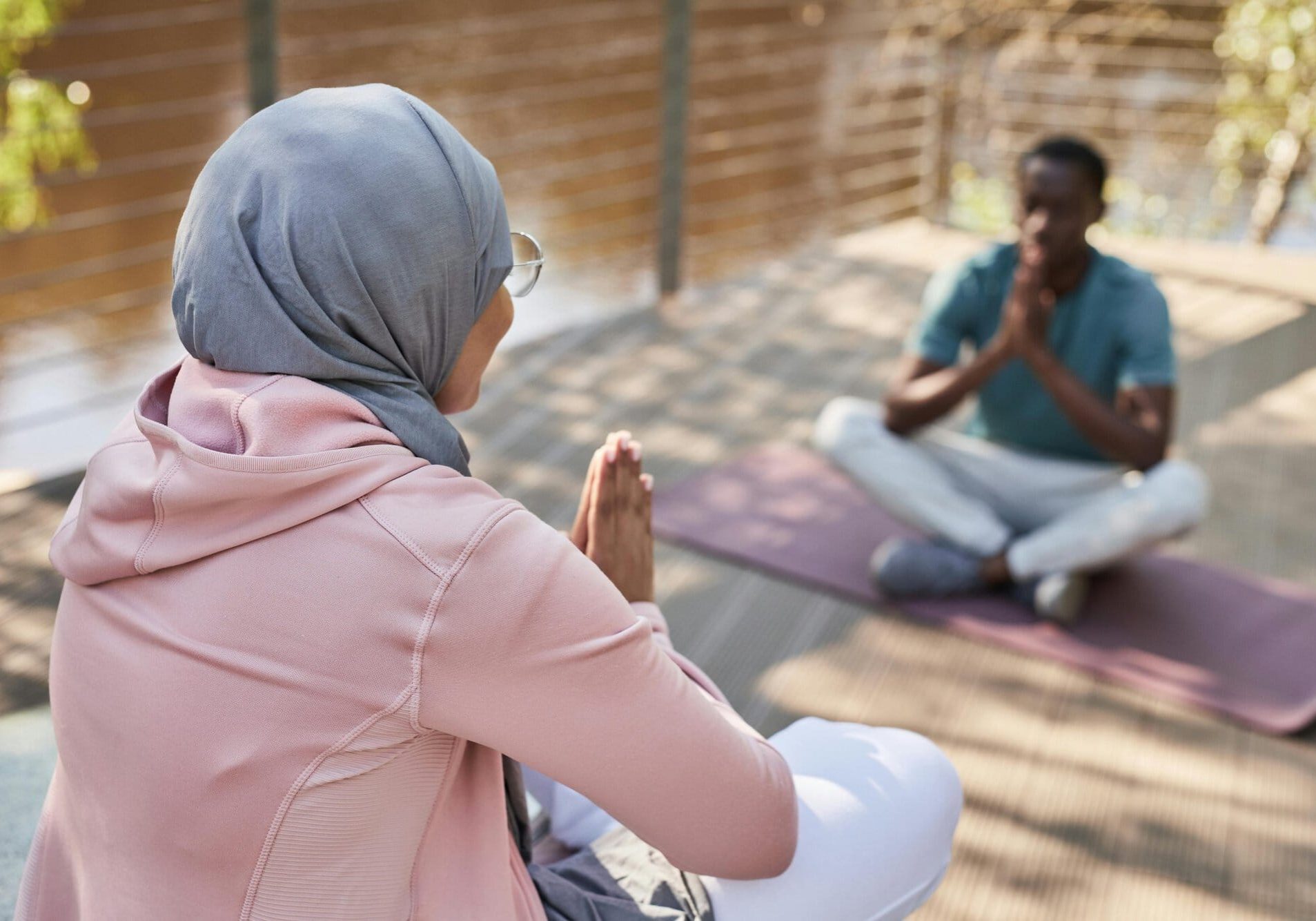
Exploring the Intersection of Faith and Yoga
How Yoga Can Complement Your Faith and Spiritual Beliefs - By Lucy Couser
Reading time: 3 minutes
For decades, even centuries, yoga has been a well-sought-after practice for its physical, practical and spiritual aspects. It’s more than some movements and poses; it’s a journey of self-discovery, a path to inner peace and a way to connect with something larger than ourselves.
But for many people of faith, a question comes to mind, can yoga coexist with their religious beliefs? Yoga has been viewed as a Hindu and Buddhist practice since its introduction to the masses, which is a completely sensible view as it’s where the practice originated from.
But the morals and values that come with these faiths have always been to share these sacred practices with the world, not in hopes of recruiting to their religion but more so everyone can use yoga to heal their body, mind and soul.
So the question is whether your faith, whether it be Catholic, Islamic, Christian or the rest, can coexist with yoga. The answer is an obvious yes in my eyes and to many others. The core principles of yoga are to work on mindfulness, breathwork and physical movement that heal you as an individual and these factors are prevalent in many other religious practices around the world.
There have been people who are curious if yoga will make their god or family angry with them. It’s interesting because it’s not something that is either stolen or appropriated and was willingly shared with people from all backgrounds, beliefs and views by Hindu teachers.
You can take the tools from these techniques and apply them to what you believe in, which is why they have been shared. There is no right or wrong way to use these techniques and skills; hence, there are so many variations of them.
In this piece, we will be discussing if common ground can be found and how exactly that is achievable.
Finding Common Threads
Prayer and Meditation
Many variations of yoga focus on meditation as a way to align your mind, body and soul, which is a fundamental part of the practice. Meditation's sole purpose is to help people establish inner peace, clarity and a deep connection to what you believe in and your true self. You could say that meditation is just another way of praying.
Praying is not only a way for people to get closer to their spiritual beliefs but you could argue it's a manifestation and form of meditation. Both practices require concentration, focus and mindfulness, and they are both seeking the same outcome of inner peace but also a better quality of life.
Emphasis on Discipline and Self Control
Yoga encourages people to practice discipline and self-control through certain poses, postures and breathing techniques. Without it, you are not carrying on yoga in your everyday life and, in turn, are not reaping the rewards and benefits of adapting yoga into your routine.
When it comes to other religious beliefs, there are rules and opportunities for individuals to practice both discipline and self-control whether it be alcohol or Ramadan. Like these religious beliefs, they share the common ground of cultivating self-control for a much higher reward and a better way of living. Being disciplined is consistently seen as a way of being closer to your spirituality and personal development.
Producing Balance and Harmony
Yoga philosophy teaches the importance of cultivating compassion, kindness and empathy for others. Essentially, the inner peace from all the mindfulness is supposed to make you more self-aware, help you understand where pain might come from and give you the tools to deal with it and affect your moral compass. While this is not an overnight thing like many religions, it is a long-term commitment.
In Islam and Christianity, compassion, respect and love for others are promoted in their belief systems, like ‘love thy neighbour’ or the prophet Muhammad, who has consistently urged Muslims to show kindness and mercy to others. While prayer can help individuals align their thoughts with their beliefs, yoga can be another gateway for people to keep them centred, or more so, it would be better as a conjunction of the two.
Inner Peace and Spiritual Connection
Meditation in yoga is all about aligning your chakras and allowing you to remain in alignment with your moral compass, but it also helps people turn off the noise, anxiety, doubt, guilt and everything else that can bring down our vibrations. Aligning your charkas can create a strong spiritual connection and cultivate inner peace for many individuals over time.
Muslims, Catholics and Christians find that through prayer to their God. Both these paths allow you to connect with what you may believe in. There is no right or wrong way to pray in some religions so adapting yoga’s movements while praying could be a happy collaboration if that works for you and is nothing but respectful to your God.
Final Thoughts
The common threads between religions, spirituality, and practices are apparent. Many of these share the same motive and core principles. So, when the question arises if you can combine them, it might be something you need validation from your loved ones. But you can rest assured here today that yoga is a practice available to all. If that is how you form a deeper connection with yourself and your religion, then this ancient practice has done its job.
You can be from any background or religion and wear any clothes, whether it’s a thobe, a dressing gown or even stark naked yoga. Yoga does not judge, hold bias or restrict any individual from believing what they want to believe, but is more of a vessel to channel and bond with on a deeper level.







